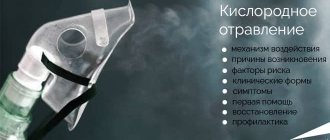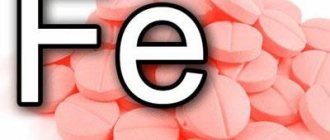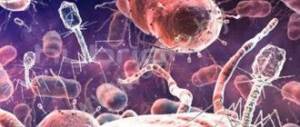Currently, industry around the world is experiencing another stage of transformation associated with tightening environmental standards - there is a general abandonment of lead.
Germany has significantly limited its use since 2000, Holland since 2002, and European countries such as Denmark, Austria and Switzerland have banned the use of lead altogether. This trend will become common to all EU countries in 2020. The United States and Russia are also actively developing technologies that will help find alternatives to the use of lead. Most leading corporations have lead elimination high on their lists of priorities. And yet, the global transition to lead-free technologies is a task, albeit not very distant, but still of the future. The fact is that the danger of lead for the environment and human health is paradoxically combined with its exceptional importance for modern industry.
This article will attempt to take a comprehensive look at the trend towards eliminating the use of lead. We will also try to find answers to pressing and legitimate questions - is this heavy metal really dangerous and why are there no similar campaigns to abandon vanadium, manganese, and nickel, because they can also be very dangerous for the environment.
Causes of poisoning
There are three ways to get lead poisoning:
- through the gastrointestinal tract;
- inhalation (inhalation of vapors);
- through the skin.
Getting the element into the body through the gastrointestinal tract is the easiest way. The digestive organs absorb about 10% of the received dose of metal (this is an approximate amount, everything is individual). But if the body does not have enough iron, calcium or zinc, the absorption of lead increases.
If an element enters the body constantly (for example, when living in environmentally unfavorable areas or when there is chronic occupational lead poisoning), the poison accumulates in tissues and organs.
Another 5% of the metal accumulates in the blood, but the largest amount (90%) is deposited in the bones. The remaining percentage settles in the kidneys and nerve tissues.
The element is eliminated from the body very slowly, and if it is regularly ingested, it does not have time to be eliminated completely. As a result, the disease Saturnism develops - chronic lead poisoning. This mainly affects workers in industries where this heavy metal is used. Lead enters their body in the following ways:
- through dust settling on the skin and penetrating into the lungs;
- along with sweat running down the face and lips;
- due to smoking in the workplace;
- due to violation of hygiene standards (after the shift, no shower, no washing of hands).
In everyday life, lead poisoning occurs for the following reasons:
- living in old houses built using materials containing lead (paint, putty, etc.);
- lack of hygiene;
- violation of the rules for working with insecticides at home;
- use of printed materials (newspapers) as toilet paper;
- In children, lead intoxication can also occur as a result of playing with old toys (especially when licking them), varnished or painted with this metal, etc.
Thus, in certain cases, lead poisoning is still possible, since sometimes contact with it is unavoidable. And if this happens, it is important to be able to recognize intoxication by the first symptoms.
Places of accumulation in the body and methods of elimination
According to medical classification, lead is a poison of cumulative action. When ingested, most of the substance accumulates in the trabeculae of the bones, thus displacing potassium salts. The next most saturated places are muscles, liver and kidneys. The least accumulation of lead and other compounds that contain it is observed in the brain, spleen, and lymph nodes.
One of the methods for removing lead from the human body is complex therapy. After determining the presence of increased levels of lead in the urine and blood, therapy is prescribed during which the elimination of the substance naturally is stimulated.
During the first stage, therapeutic fasting is carried out. During this period, the liver uses up reserves of necessary substances and begins to intensify metabolic activity. The stage, which lasts about 3 days, allows you to mobilize the body for cleansing.
The second stage is the water load on a person. During this period, distilled water is used instead of regular water for drinking. It has been proven that drinking 1.5 liters of water helps dissolve many compounds. Their further excretion by the kidneys allows in the first day to reduce the content of heavy metals, including lead, by 15-20% compared to the initial blood and urine test.
Stair climbing exercise helps remove lead from the body
The third stage of therapy is moderate physical activity on the lower extremities, during which it is recommended to take long walks. As an alternative to walking, training can be carried out in the form of climbing stairs at an average pace up to the 3rd floor. The load for a man aged 30-35 years without chronic diseases is 20 lifts per day. This load is enough to mobilize the body to activate metabolism in the bones of the lower extremities.
In addition to the listed measures, therapy includes the introduction of complexones and diuretics into the body.
Symptoms
For lead poisoning, symptoms will vary. It depends on age and the form of intoxication.
Signs of acute poisoning in adults
Poisoning with lead and its salts in acute form occurs less frequently than in chronic form. In this case, a person first exhibits signs of disruption of the nervous system:
- excessive excitability, anger;
- dizziness followed by absent-mindedness;
- forgetfulness;
- rapid fatigue;
- difficulty concentrating;
- in case of severe poisoning - convulsions, trembling of limbs.
Alarm signals of damage to lead and its compounds appear in the gastrointestinal tract:
- diarrhea or constipation;
- sweetish, but at the same time disgusting, taste in the mouth;
- salivation;
- nausea, vomiting;
- loss of appetite;
- colic in the stomach.
A little later, a dull pain occurs in the liver area (due to organ dysfunction), the kidneys are affected (there is no pain, but the color and composition of the urine changes). The pressure rises and the joints begin to ache. At the edges of the gums and teeth there is a characteristic gray-purple border, called lead.
Not all of the listed symptoms will necessarily appear, but the gastrointestinal tract responds to poisoning in any case.
Symptoms of chronic poisoning
A chronic form of poisoning develops if there is occupational lead intoxication (so-called occupational poisoning due to constant work in production where this element is used), or if a person has been forced into contact with the metal at home for a long time.
Lead is the #1 heavy metal
Lead is in many ways an ideal metal, because it has a lot of advantages that are important for industry. The most obvious of them is the relative ease of its production from ores, which is explained by its low melting point (only 327 ° C). When processing the most important lead ore, galena, the metal is easily separated from the sulfur. To do this, it is enough to burn galena in a mixture with coal in air. Due to its high ductility, lead is easily forged, rolled into sheets and wire, which allows it to be used in the engineering industry for the manufacture of various alloys with other metals. The so-called babbits (bearing alloys of lead with tin, zinc and some other metals), printing alloys of lead with antimony and tin, alloys of lead with tin for soldering various metals are widely known.
Metal lead is very good protection against all types of radioactive radiation and x-rays. It is introduced into the rubber of the apron and protective gloves of the radiologist, delaying X-rays and protecting the body from their harmful effects. Glass containing lead oxides also protects against radioactive radiation. Such lead glass allows you to control the processing of radioactive materials using a “mechanical arm” - a manipulator.
When exposed to air, water and various acids, lead exhibits greater stability. This property allows it to be widely used in the electrical industry, especially for the manufacture of batteries and cable trunkings. The latter are widely used in the aviation and radio industries. The stability of lead allows it to be used to protect copper wires of telegraph and telephone lines from damage. Thin lead sheets are used to cover iron and copper parts that are exposed to chemical attack (baths for the electrolysis of copper, zinc and other metals).
In general, one can list many areas of application of lead: treatment of the internal surface of chemical equipment, pipes for pumping acids and waste pipes of chemical laboratories, production of electrical cables, lead glass and crystal, glazes (and that’s not all). Books, magazines, and newspapers are printed with the help of printing metal containing lead. Paints are made from some compounds of this metal - for example, whitewash. Natural lead compounds (lead, litharge) have a beautiful, stable yellow, orange and red color and are used as dyes. Lead oxide is used in metallurgy, glassmaking and medicine. In the PVC industry, the use of lead stabilizers makes it possible to create window profiles that are resistant to deformation, heat and sunlight.
Speaking about the price of lead, it is necessary to note its relative cheapness. At London Metal Exchange prices, it is cheaper than zinc by an average of $100-150, aluminum by $800, and copper by $2,000 per ton.
But is lead really that perfect?
How to help a victim at home
First aid for lead poisoning is necessary, but, unfortunately, there is little that can be done at home. But the sooner symptoms of intoxication are noticed and measures are taken, the better.
You need to start providing first aid for lead poisoning by calling an ambulance. Immediately after this, follow these steps:
- Remove the victim from the room where metal vapor poisoning could occur. Those helping themselves must wear a protective mask so as not to inhale lead fumes.
- Encourage the victim to rinse their mouth and nostrils with water. After this, you can give him tea or water.
- If metal gets on your skin, wash the area with water.
- If lead gets into the stomach, rinse it (give a liter of plain water to drink) and induce vomiting.
- Give an enema.
- Provide the person with peace in a ventilated area.
- Offer the poisoned person something to drink more often. The metal is excreted in the urine, so the more liquid the victim drinks, the more poison will be released naturally.
You cannot give a person medications! Only activated carbon can be offered as a sorbent, and all other medications should be prescribed by a specialist. But instead of medicines, it is allowed to offer the poisoned person products that have an enveloping effect (starch jelly, milk, egg whites, etc.).
Lead is dangerous, but not in windows
All over the world, for more than 50 years, there has been a gradual phase-out of the use of lead in all industries. A number of countries have taken strict measures to limit the use of lead in industry.
Photo: Lead production plants can pollute the environment. Environmentalists and public organizations are concerned not with the lead content in products (household appliances or plastic windows) and not with their danger of human use. The protests are against environmental pollution for two reasons:
- Lead and additive manufacturing plants may have ineffective dust control systems, and emissions may contain up to 57% lead;
- Uncontrolled disposal of products containing lead can lead to release into soil and water.
The goal of environmentalists is to significantly reduce the consumption of lead, and, accordingly, its production and the volume of manufactured goods containing it. All this forces product manufacturers to look for a replacement for lead. In windows, these are stabilizers based on calcium and zinc (Ca-Zn).
Carrying out diagnostics
In order to correctly determine the symptoms and treatment, a preliminary diagnosis is carried out to identify the presence of lead in the body, its quantity and the duration of the intoxication period. To do this, a number of studies are carried out:
- a blood test to identify foci of inflammation, the level of red blood cells, and organs in which lead has accumulated;
- blood test to detect anemia;
- blood for biochemistry to determine the level of electrolytes, disorders of the kidneys, pancreas, liver;
- ECG to assess heart activity;
- blood pressure control (with severe saturnism, pressure sometimes rises to a critical level);
- Ultrasound of organs;
- X-ray to determine the localization of metal.
Without these studies, making a diagnosis will be difficult. Therefore, timely diagnosis will help to immediately begin targeted treatment of lead poisoning and avoid complications.
Hazard Class
Nowadays, the harm from lead to human health is obvious. It is a dangerous enough substance to cause poisoning if handled incorrectly. As you know, all harmful substances are divided into four hazard classes.
The hazard class of lead is the second, “Highly Hazardous Substances,” and its compounds, lead oxide and soluble lead salts, belong to the first class, “Extremely Hazardous Substances.” In practice, this means that the average lethal dose of a substance when it enters the stomach and onto human skin is quite insignificant and amounts to 15-150 and 100-150 mg/kg, respectively, and the indicated compounds are even smaller - less than 15 and less than 100 mg/kg.
Inpatient therapy
Treatment for lead poisoning can only be done in a hospital. The prescription of drugs and procedures will depend on the form of poisoning.
Treatment of acute form
After confirming that acute poisoning in a person is caused by a lead compound, doctors immediately begin treatment:
- IVs with saline, vitamin C or glucose;
- oxygen inhalation;
- cleansing the stomach with a probe (after ingesting lead);
- monitoring pulse, blood pressure and breathing.
In case of poisoning, an antidote is necessary. Unithiol, D-penicillamine, EDTA, Succimer or Dimercaprol are administered as an antidote for lead poisoning. This will help remove the poison from the body faster.
Treatment of the chronic form
It will take a long time to treat chronic lead intoxication. And if the degree of intoxication is diagnosed as severe, you may not expect a full recovery. This mainly happens when the accumulated lead has managed to replace bone tissue in places. In such cases, all that can be done is to minimize complications and slightly reduce the amount of metal that has “taken root” in the body.
When treating Saturnism, the following measures are taken:
- administration of antidotes;
- magnesium sulfate to normalize blood pressure, dilate blood vessels and relieve seizures;
- intravenous glucose to nourish nerve cells;
- antispasmodics for colic;
- B vitamins to restore the central nervous system;
- drugs that support heart function;
- physiotherapy (baths, wraps, massages) for bone and muscle pain and to speed up the recovery of the body.
- diet (prescribed fruits and vegetables rich in pectin - zucchini, apples, plums, pears, pumpkin, etc.).
After stabilization of the patient's condition, he is discharged for outpatient treatment. At home, he must continue to follow his diet and take medications.
How does lead poisoning manifest in children?
Metal is especially harmful to children's bodies. Children suffering from chronic lead intoxication have different signs of poisoning. It depends on the age of the child.
Newborns are severely delayed in physical development.
In young children under the age of 5 years, the level of intellectual development is significantly reduced. This is due to the fact that lead affects the child's brain. Children stop developing and become oligophrenic.
Olegophrenia, or dementia, is a brain pathology that can be congenital or acquired. It is characterized by persistent and irreversible underdevelopment of intellectual and mental activity.
Children after 6-7 years stop developing normally. And their chronic poisoning manifests itself in the form of polyneuropathy.
Polyneuropathy is damage to the peripheral nerves with impaired sensitivity in the arms and legs . A general weakening of the body gradually develops.
An important symptom of poisoning in children of any age is anemia. Lead destroys red blood cells that carry oxygen. As a result, the child’s body experiences chronic oxygen starvation. And this is one of the reasons for the formation of mental retardation.
Consequences of poisoning
After severe poisoning, the body is not always able to cope with the stress suffered, so the list of consequences here is very impressive:
- weight loss;
- intractable anemia;
- osteoporosis;
- kidney dysfunction;
- decreased intelligence;
- poor memory;
- polyneuropathy;
- dysfunction of the extensor muscles;
- damaged teeth;
- deterioration of vision and hearing;
- damage to the endocrine system.
Not all of the listed consequences will necessarily appear after lead intoxication, but sometimes even 1-2 diseases are enough to be treated for life.
In children, lead that enters the body can cause additional consequences:
- physical and mental underdevelopment;
- inability to fully perceive information;
- persistent anemia;
- rapid fatigue after minimal exertion.
Severe poisoning with this metal is very dangerous, as it can lead to disability or death for victims.
Have you ever had lead poisoning?
Prevention measures
Lead, which is dangerous due to its effects on the body, has, in addition to acute intoxication, no less severe consequences in the form of exacerbation of chronic diseases. According to most scientists, the consequences of poisoning can be most effectively prevented by using poisoning prevention methods. Since most cases of poisoning are associated with inhalation of lead-laden dust through the mouth, the most effective way to protect yourself is to wear protective masks or respirators.
The most effective way to protect against lead poisoning is to wear respirators.
In production workshops, it is necessary to carry out thorough cleaning of the premises; during work, in addition to respirators, it is also necessary to use special clothing.
Preventive measures
To prevent lead poisoning, preventive measures must be followed as strictly as possible:
- When working with lead, follow safety rules;
- undergo medical examinations on time so as not to miss possible occupational diseases in the initial stages;
- consume fermented milk products, vegetables and fruits with a high pectin content;
- take a shower after a work shift;
- change jobs if there is a suspicion of poisoning (to avoid the development of saturnism as an occupational pathology);
- do not use printed products as toilet paper;
- do not choose housing near large industrial points;
- do not use old pottery and other utensils from many years ago in everyday life;
- replace old pipes in residential premises with modern ones;
- Keep paints and varnishes that may contain lead away from children;
- wash children's toys, study their composition when purchasing;
- teach children about hygiene.
Preventing lead poisoning is not always so simple. Sometimes you have to sacrifice your place of work or residence, do major repairs to replace old components, etc. But it is better to lose something familiar in life than to forever lose the health of your loved ones or your own.
Lead removal through medication
At the first stage of treatment, the patient must be prescribed antidotes (according to the condition):
- Succimer. The dosage cycle is usually designed for 3 days, 500–600 mg of the drug 3–4 times a day. After 3 days - a 2-day break.
- Tetacin. Used in the same way as Succimer, but in more complex cases.
- Unithiol. Give in tablets 4 times a day or as a 5% drip solution intravenously.
- D-penicillamine. 450 mg per day, designed for 3-4 injections.
These drugs, which bind and remove lead, are called “metal cleaners” by toxicologists for a reason. Taking such medications is vital for the patient in case of poisoning with other heavy metals.
At the second stage, the patient is prescribed medications, depending on the lesions. If the metal concentration is localized in the heart or kidneys, the following is prescribed:
- intravenous or intramuscular nicotinic acid,
- cocarboxylase solutions,
- adenosine triphosphate intramuscularly.
If the nervous system or brain is damaged:
- Vasobral (tablets) and intravenous Vinpocetine with sodium chloride,
- 20% glucose solution,
- magnesiums,
- B vitamins by drip or intramuscular injection.
All medications and dosages are selected by the doctor strictly individually. Treatment takes place under the supervision of doctors in a hospital.
Impact on the human body
In the adult human body, about 100 mg of this metal is present, distributed mainly between the bones, liver, kidneys, brain and teeth. Depending on the area of human activity, the amount of lead in the body may increase with age. Lead enters the human body mainly in three ways: from the air through breathing, through food and water, and through the skin.
An excess of this metal in the body can lead to poisoning. The most common is chronic poisoning, or saturnism. It is dangerous because the metal gradually accumulates in the organs without showing itself in any way, and the consequences can only appear after months or even years.
A rarer case is acute poisoning, which is most often associated with industrial accidents or children swallowing a piece of metal.
The main symptoms of poisoning are pale skin, dark gray discoloration of the gum edge, metallic taste in the mouth, colic in the lower abdomen, poor attention, sleep disturbance, aggressiveness, and fatigue.
Lead has a negative effect on the entire body, but the central nervous, hematopoietic and digestive systems are especially susceptible to damage. Chronic poisoning can contribute to the development of gout, kidney disease, destruction of red blood cells and other disorders in the body, which will subsequently require long-term medical treatment. In case of acute intoxication, irreversible consequences for the human body and even death can occur.
The most dangerous effects of lead are on the health of children and pregnant women. It has been established that even a small content of this element in a child’s body reduces mental activity and leads to problems in learning. Acute poisoning can lead to behavioral disorders, developmental delays, and dysfunction of the brain and central nervous system. Intoxication of a pregnant woman can cause premature birth or intrauterine death of the fetus.
Prevention of poisoning
It is necessary to strictly observe safety and personal hygiene rules when handling this metal.
Be careful when using glazed pottery, as the lead in the glaze dissolves readily in acidic liquids and can leach into food. New dishes with an acidic liquid poured into them must be thoroughly heated. Never store preservatives or acidic foods in it.
Lead poisoning is a common type of intoxication with heavy metal salts. This condition is characterized by a specific clinical picture. It is important to recognize warning signs in time and provide first aid correctly: this will help avoid serious consequences.











